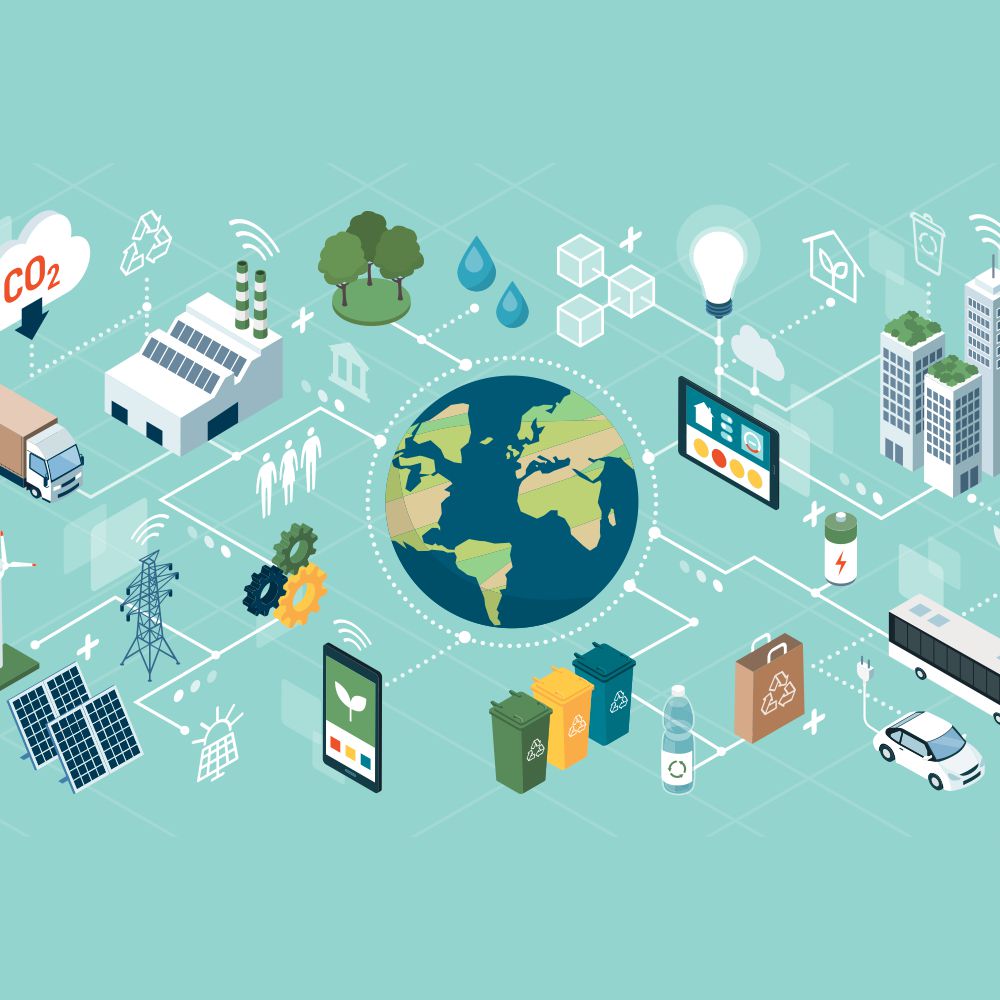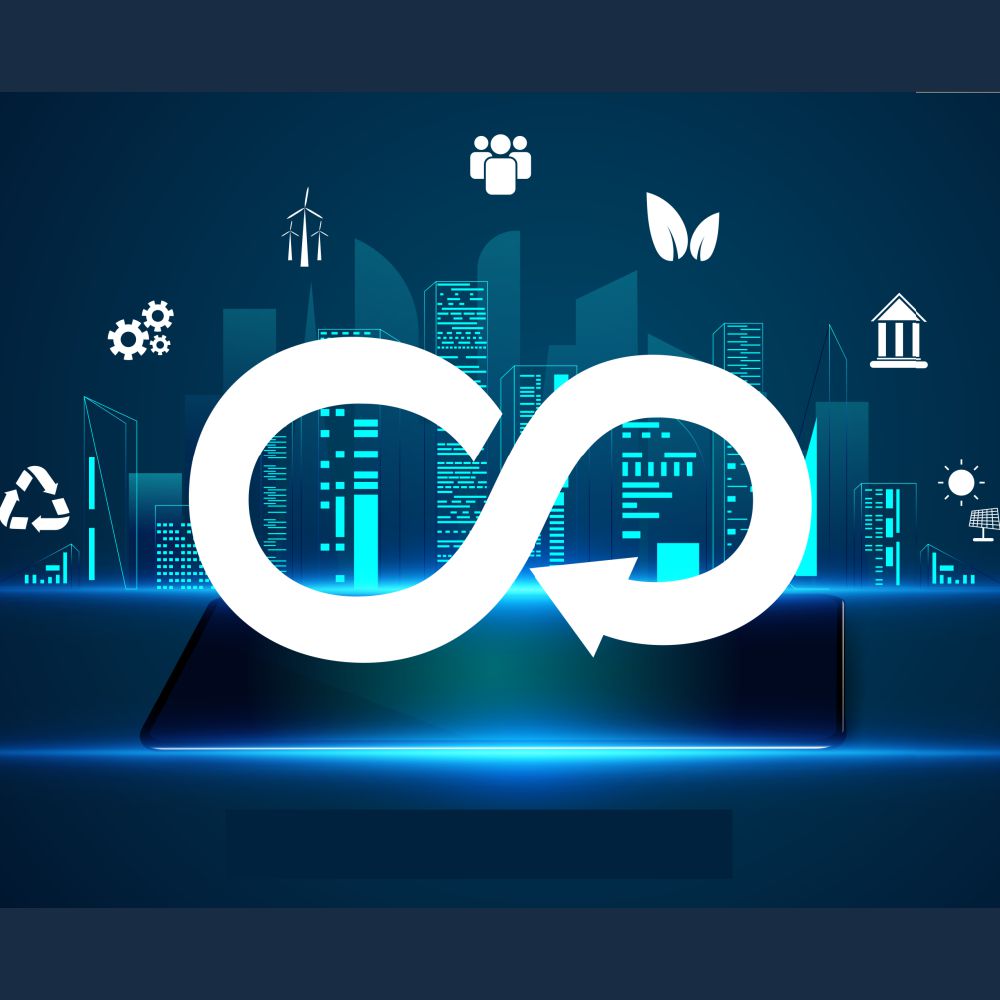When the whole world came to a grinding halt, supply chain proved its mettle and became the talking point across the corporates’ boardrooms. What used to be at back burner for decades took the front seat in tough times. On the back of technology, automation, talent and most importantly resilience, supply chains around the globe worked exceptionally well and kept the economic wheels going. As the aftereffects of pandemic are still lingering, it’s time now to make the supply chain stronger and even more futureproof. Sunil Bharadwaj, Experienced Supply Chain and Operations Management Professional, through this opinion piece, offers the changing landscape of supply chain that we will witness in the next few years…
We owe it to the Covid-19 pandemic that struck a couple of years ago and brought the world to its feet. The supply chain management function has gained centrestage since then. Logistics and supply chain professionals came to the fore and used all their experience, innovative spirit and situational awareness to ensure that essential items such as groceries, masks, sanitizers, cleaning products, medicines, etc., reached every nook and corner of the country.
The term ‘Supply Chain’ was increasingly being mentioned everywhere. More and more people wanted to understand what we did for a living and began to appreciate the nuances around making the right product available to the end consumer/ customer at the right time in the most cost-effective manner. We saw images of empty store shelves that ran out of tissue paper, drinking water, etc., bringing to light the hitherto ‘taken for granted’ role of supply chain operations professionals globally.
EVOLVING LANDSCAPE
When we talk of an evolving landscape, it means that our function and different industries at large, are in a constant state of change and flux. Modern supply chain management is as much an art as it is a science. Key global trends and developments such as inflation, recession, rising input costs, currency depreciation, climate change, weather events, geopolitical tensions (The Ukraine war), trade disputes (USAChina), food and energy crisis, etc., have made sure that supply chains are in a constant state of vigil and that they need to continuously evolve in the light of local and global developments that shape our industry. The term, VUCA, would become the norm rather than the exception going forward. I really don’t think we could ever witness a pre-Covid era that was fairly stable and predictable.
NOTABLE SUPPLY CHAIN TRENDS AND DEVELOPMENTS
Now that I have set the context, it would be relevant and worthwhile to provide an overview on the major trends and developments influencing our practice…
De-globalization: The jury is still out in this. All these decades, supply chain networks were designed to take advantage of lower operating costs and therefore tended to get more diversified and global. Materials travelled long distances through different geographies along their journey till they reached the final customer/consumer. However, we have began to notice the potential risks with respect to this approach.
In certain industries, such as semiconductor chips, fertilizers, minerals and metals, edible oils etc., supply shortages have wreaked havoc on production and delivery schedules. Terms such as near-shoring, re-shoring, and friend-shoring have become common place. Companies in various sectors have been moving manufacturing and sourcing out of China to countries such as India, Vietnam, Bangladesh, Malaysia, and Indonesia. However, this is easier said than done and would take considerable amount of time and investments. Developing regional and local value networks would not be easy. But we are on that journey – thanks to enabling policies such as Production Linked Incentive schemes (PLI), the National Logistics Policy (NLP), ‘Make in India’, and the GatiShakti National Master Plan in addition to ‘Bharatmala’ and ‘Sagarmala’ projects.
Flexibility and Resilience: Another supply chain strategy that is gaining traction is ‘Flexibility’ within the supply chain system. Building redundancies aids in superior capacity management. The need to react and respond nimbly to changing market dynamics and customer expectations is of paramount importance and would provide competitive advantages to businesses competing in the same sector or industry. This would require supporting strategies and initiatives that result in shorter reaction times without compromising on product/ service quality and customer service.
The resilience of supply chain and logistics networks has been tested severely in the last decade or so given the scale and frequency of global weather events and other disasters across the globe. Supply chains today are constantly looking at ways and means to become more resilient – in terms of their ability to bounce back and restore operations as quickly as possible.
Risk Management: Supply chain vulnerability has never been higher than it is now. Therefore, there is a need to devise and deploy suitable people practices, policies, processes, procedures, tools, and systems to enable supply chains to predict, manage and mitigate various risks that emanate from the upstream side all the way to the last mile journey. In this context, the seminal work done by leading supply chain and operations management thinker, Professor David Simchi-Levi (MIT) is worth mentioning. He has developed a supply chain stress test (akin to the financial stress test that was developed for assessment of the liquidity levels at banks and other financial institutions in the aftermath of the 2008 global financial crisis) using certain metrics.
He has devised the following metrics:
- Time to Survive (TTS): The time taken by a node in the supply chain to return to full functionality after a disruption has occurred (measured in days/weeks).
- Time to Recover (TTR): The maximum duration of time that a supply chain network can match supply with demand after a disruption at a particular node (measured in days/weeks).
- Performance Impact: The potential loss or impact on sales revenues and operating profits caused by a disruption (measured in terms of monetary value).
E-Commerce and Quick Commerce: The advent of e-commerce and quick commerce has resulted in heightened customer expectations with delivery windows ranging from 2-3 days to same day, to 30-60 minutes. A host of technology enabled startups and service providers in this space have given consumers and customers a wide range of options in addition to flexibility and convenience. This has shifted the lens towards reverse logistics and supply chain considering the enormous cost implications emanating from free returns and replacements.
The new age business models entail significant investments in the forward as well as reverse supply chain networks and related infrastructure. The birth of ‘Dark Warehouses’ that were created by quick commerce food and grocery players has modified the customer service paradigm. However, not all businesses have been successful, and some service providers have had to relook at their dark warehouse network from a profitability standpoint. The growth of e-commerce and quick commerce has also led to a manifold increase in warehousing and transportation infrastructure. Several technology-enabled logistics startups are collaborating with D2C, B2B, C2C, B2C and B2B2C brands to ensure timely availability of products through intelligent and efficient last mile delivery networks. Thanks to this burgeoning growth, the e-commerce logistics industry is expected to grow to US$9 billion in the next 8-10 years.
Sustainability and Circularity: Sustainable, green, and circular supply chains are no longer buzzwords confined to textbooks and theory. Over the last 5-7 years, significant initiatives have been taken by corporates of various sizes and scales across sectors with respect to their people practices, product and process design and logistics footprints. Annual reports of corporates have a separate section related to sustainability initiatives related to the business and have clearly laid down policies with respect to stakeholder management, reporting, energy consumption, waste management, resource management, carbon footprint, triple bottom line (Economic-Social-Environmental impact; People-Profit-Planet impact).
The progress on the relevant goals from the list of 17 SDGs or Sustainable Development Goals are measured, tracked, and reported. The logistics industry and related operations contribute to around 3% of global carbon emissions and steps are being taken to reduce the carbon footprint through the use of alternative fuels, green energy sources, electric mobility, etc.
Certain industries such as plastics, packaging, consumer electronics, consumer packaged goods, fast moving consumer goods, pharmaceuticals, textiles, and apparel have started adopting and deploying steps related to material returns, segregation, re-usage, recycling, and refurbishing. In this regard, the role of ESG financing and green financing is beginning to gather pace, although there are challenges with regard to the efficacy and effectiveness of these models on the ground. It is also necessary to be vigilant and guard against ‘Greenwashing’.
Ethics & Diversity, Equity, Inclusion (DEI): Responsible and ethical supply chains are no longer an exception. To build lasting customer and consumer goodwill, it is essential to adopt and demonstrate behaviours that build trust in the brand, product or service. In the light of the 17 UN SDGs mentioned in the previous section, it is incumbent on supply chain and logistics professionals to ensure adherence to fair business practices, labour laws and dignity of work.
The workforce deployed at the various operating sites such as manufacturing units, warehouses, distribution centers, fulfilment centers, dark warehouses, wholesale outlets, retail outlets, etc., need to be provided proper and safe working conditions. Any malpractice or fraud needs to be brought to light and thoroughly investigated. Yes, I do agree that this is easier said than done. However, any supply chain organization that demonstrates honest and ethical behaviour through their interactions with suppliers, customers, dealers and other logistics service providers, would sustain in the marketplace and as a result, garner financial benefits.
The other aspect in supply chain organizations is the increasing impact of diversity, equity and inclusion. There is a conscious effort being made to make the hiring, on-boarding, career planning and retention processes as diverse and inclusive as possible. In my opinion, this trend and positive development will gain more traction in the coming years and would only contribute to the quality of work, productivity, output and richness of discussions and debates within and outside organizations.
Digitalization and Technology: The critical role of digitalization, technology and automation tools in the logistics and supply chain function and industry as a whole can neither be ignored nor undermined. It is pertinent to note that the government’s draft ‘Digital Personal Data Protection Bill, 2022’ being reviewed, discussed, and debated, would go a long way in ensuring that consumer data is safe, protected and used for legitimate purposes with the consent of the end user. The plethora of online applications and related software bring with them issues related to data privacy, safety, and security.
Post GST implementation, supply chain and logistics systems have become more agile and responsive. It would have ramifications for network design with respect to facility location, sizing, inventory placement, customer service levels, etc. This has led to the development and finetuning of optimization tools, network modelling, simulation tools, decision support systems, data flows and system integration.
GROWTH DRIVERS AND ENABLERS
Moving forward, the following ten elements or building blocks would act as growth drivers and enablers:
Human Capital: Just as any other function, our domain too needs skilled manpower across upstream and downstream functions. Re-skilling and up-skilling of logistics and supply chain professionals is an ongoing process. Both online as well as offline modes could be used.
Start-up Ecosystem: Start-ups have been playing a crucial role in the logistics and supply chain space in the last 8-10 years. A case in point is the role of LSPs, particularly logistics technology firms that provide their clients with last mile delivery, track and trace, performance monitoring and other smart solutions spanning inbound and outbound logistics.
Government Policies: The role of our central as well as state governments cannot be overlooked. A considerable amount of work is being done in this direction. The NLP, PM GatiShakti NMP, industrial and trade policies are prime examples of enabling initiatives to ease operational bottlenecks, bring about greater collaboration among project implementation ministries and partners, reduce operating costs and enhance customer service.
Compliance Mechanisms: For certain industries such as Pharmaceuticals, Food and Beverages, Agricultural, Commodities, etc., compliance with local and international laws is necessary. For other sectors, the scope of compliance needs to be extended to sector specific internal and external rules, processes, SOPs, and policies.
Infrastructure Investments (Both Public and Private): From a macro-economic perspective, credit growth has outpaced deposit growth with bank lending witnessing steady growth in the last few quarters. This augers well for our economy, which shall see increased capital spending in the coming financial year – be it in manufacturing, integrated logistics parks, transportation, roads, highways, ports, dedicated freight corridors, container terminals, container freight stations etc. A highly positive development is the ‘Industry’ status accorded to the warehousing sector.
Environment, Health, and Safety: EHS has seen renewed thrust in the last two years after Covid-19 struck the globe in 2020. We have been seeing an increasing level of awareness, deployment, and adoption across the end-to-end supply chain spectrum within companies from all sectors including products and services.
Logistics on Demand (Logistics-as-a-Service): In my opinion, this is an area that would evolve going forward. LSPs could provide logistics services to clients and customers based on a pay-per-use or subscription model with cost structures devised accordingly. Also, there could be scenarios where transporters and warehouses could share infrastructure to reduce dead hauls and optimize truck loads and warehouse space utilization. This is easier said than done and would entail trust among partners in addition to the deployment of appropriate smart technologies.
Resource Sharing and Collaboration Models: This is a focus area connected with the point above. Resource sharing could extend to all the logistics and supply chain resources and assets. The concept could be extended to areas such as Production-as-a-Service, Warehousing-as-a-Service, Transportation-as-a-Service.
5G Connectivity: The future of connected & smart warehousing and transportation cannot be envisaged without quick and efficient system connectivity and network infrastructure. Here, the 5G enablement policies and initiatives being undertaken by the government as well as telecom service providers and gear manufacturers would prove to be a gamechanger in the next 3-4 years.
Sectoral Focus: Finally, specific sectors need specific initiatives and ongoing improvement projects with respect to logistics and supply chain initiatives. Although the underlying principles would not change, the complexity and the degree of change we would witness in the next 3-5 years would vary. All in all, there has never been a better time to be a part of our growing and evolving domain.
POISED FOR ASTOUNDING GROWTH
Finally, the National Logistics Policy (NLP) in conjunction with the PM GatiShakti National Master Plan and the ongoing Sagarmala (ports and inland waterways infrastructure modernization and connectivity) projects, Bharatmala projects (Roads and highwaysconnectivity), multi-modal logistics parks (MMLP) projects and the dedicated freight corridors (DFC) networks would pave the way for our country to reduce our logistics costs from 14% of GDP to less than 10% of GDP and to improve our global ranking in the Logistics Performance Index (LPI). These initiatives that aim to seamlessly connect and bring the various project planning and execution bodies together would further strengthen India’s competitiveness in the manufacturing and exports sectors in the next 10-15 years.
Our journey has only just begun. We have come a long way and have a long and arduous journey ahead. However, the intent and direction are very clear, and the benefits would follow in the years to come. All in all, this is the best time to be a logistics and supply chain professional and be a part of this evolutionary and exciting journey.

Categories

Magazine Editions






















